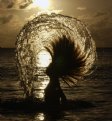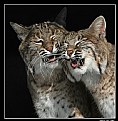|
|
 Len Webster
{K:25714} 10/16/2008
Len Webster
{K:25714} 10/16/2008
|
Hi, Nessa. Yes, slides have become a bit of a 'problem' - so many memories left in cartons and boxes!
Thanks for stopping by. Hope you manage to get round to looking at your slides some time soon.
Best, Len
|
|
|
|
 Len Webster
{K:25714} 10/16/2008
Len Webster
{K:25714} 10/16/2008
|
Wolf, thanks for stopping by. Appreciate the suggestion. Len
|
|
|
|
 vanessa shakesheff
vanessa shakesheff
 {K:68840} 9/29/2008
{K:68840} 9/29/2008
|
I have loads of slides i have to do..but it won,t be for a while..will be following any tips you get len..nessa
|
|
|
|
 Wolf Zorrito
Wolf Zorrito
 {K:78768} 9/29/2008
{K:78768} 9/29/2008
|
Usually a slide is pretty flat in color. Use color balance for the righ colors and increase color saturation a bit.
|
|
|
|
 Len Webster
{K:25714} 9/24/2008
Len Webster
{K:25714} 9/24/2008
|
Thanks for the response, Amitava. My main aim in getting these done is for personal reasons, of course, but it would be nice to be able to improve on the quality. (I don't yet have much in the way of post-processing things like Photoshop but it's looking as if I really ought to start taking it more seriously and investing..)
Best wishes, Len
|
|
|
|
|
Amitava Banerjea
{K:7088} 9/24/2008
|
It's tough to find a perfect solution. A lot depends on the scanner you are using. It also helps to know what the original film was as the color characteristics of Kodachrome and other slide films are quite different. For negative film there is the added complication of the overall color cast added by the developing lab. My Nikon scanner has different settings for different slide and negative film.
In general I find I have to do quite a bit of post-processing in something like PS to get the color and contrast right. Of course, you have to start with a scan in the highest possible resolution and color depth.
Happy scanning!!
|
|
















